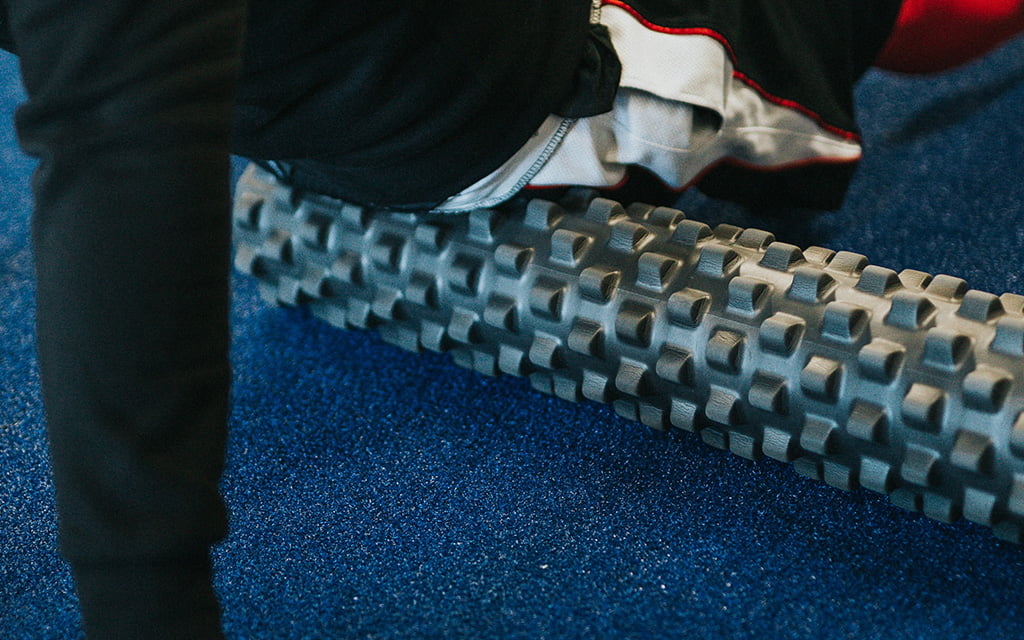DIY Mobility and Soft Tissue Work

A lot of the content featured in this article is from my Mobility Trainer Certification with Dr. Kelly Starrett in Denver earlier this year. He has a great website, thereadystate.com and a great book “Becoming a Supple Leopard” for further reading.
The objective of this article is to provide you with an easy to implement plan and understanding of the bigger picture of what it means to ‘Function Well’. This is just a snippet of information and if you take some valuable tips! Also, don’t forget in our warm-up area we have the equipment which you can use to prepare for whatever major lifts you are doing for that day, or select the mobility drills for your muscle groups needing the most attention.
If you have knee pain, neck pain, shoulder pain, back pain or elbow pain that is not normal, your body is telling you something needs to be addressed. The tips below, along with our Restoration Zone and Yoga classes will have you well on your way to kissing niggles or severe pains away in no time!
INJURY PREVENTION
Old Theory = Lagging Indicator
This method of assessment is based on treating the injury once it becomes present or bad enough you can’t complete a workout due to pain, rather than injury prevention. Lagging Indicators might be:
- Pain Yes/No
- Task Completed Yes/No
What we want to do is get in tune with our bodies and the messages it’s telling us and look for any ‘Leading Indicators’.
The protocols in this blog are proactive, rather than reactive. In Kelly’s words, he describes Mobilisation as “a movement-based integrated full-body approach that addresses all the elements that limit movement and performance including short and tight muscles, soft tissue restriction, joint capsule restriction, motor control problems, joint range of motion dysfunction, and neural dynamic issues. In short, mobilization is a tool to globally address movement and performance problems”.
New Theory = Leading Indicators
Leading Indicators left un-addressed will more than likely end up in an injury. Some common Leading Indicators might be:
- Pain
- Joint soreness
- Tightness
- Poor technique, biomechanics
When we’re looking at addressing Leading Indicators the first area we need to address is our movement patterns, our lifting technique. It can be counter-productive to do all the mobilisation work if we are moving with poor technique in the gym and in everyday life.
Your 1st Rep should be the same as the last rep – neurologically we’re wired for repetition. If more reps are shitty, the body will be wired to do shitty reps (this is the Million Rep Rule).
Leading Indicators can be caused by:
- Over Tension – The biomechanics of the body/restricted Range of Motion (ROM)
- Motor Control – both seated or dynamic. This means if you are seated for long periods it will impact your biomechanics when you do dynamic movements, or if you have a poor technique that’s not addressed then your motor pattern will be programmed this way.
In Daniel Lieberman’s book ‘The story of the Human Body’ he states the chair was the worst invention for the human body. As I have always said – we are designed to move, not to be stuck at a desk for 8+ hours a day. Without incorporating physical activity into your life all sorts of disease, health, physical and emotional problems become present.
So, first things first – Address Technique!
Before anything else we need to learn how to set our mid-line – our spine. How to set your mid-line is explained below, and you can also refer to the Function Well Foundations posters around our facility which explain how to do this. Always remember how well you can move with a neutral spine, regardless of how many reps or the load, is what sets you up for a healthy body.
FUNCTIONAL MOVEMENTS & THE IMPORTANCE OF SETTING NEUTRAL SPINE
A functional movement is any movement that causes a wave of contraction from your core to your extremities. Core = CNS/ Spine. At the end of the day, the body’s priority is to protect the spine and every movement in the extremities is generated firstly through the core. So the first thing we need to address and set is the mid-line/neutral spine. Any deviation of the spine means decreased force production and increased risk of injury.

